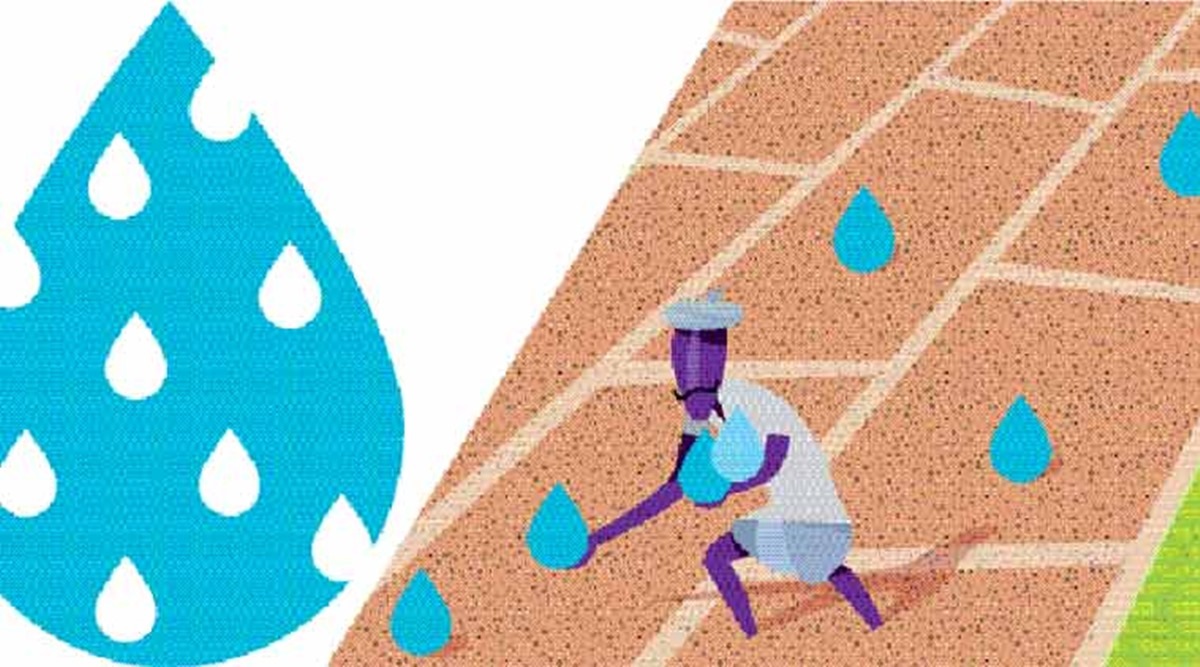 Sources said, “The MVA government had discontinued the scheme in March as it wanted to evolve policies based on the collective decision of three coalition partners.” (Representational)
Sources said, “The MVA government had discontinued the scheme in March as it wanted to evolve policies based on the collective decision of three coalition partners.” (Representational)Almost six months after discontinued the previous BJP-led dispensation’s Jalyukta Shivar Abhiyan, the Maha Vikas Aghadi government has decided to promote irrigation wells to tackle water crisis in rain-shadow regions of Vidarbha and Marathwada and help farmers cultivate two crops every year.
Under the new policy, the water conservation department has set an ambitious target of completing three lakh irrigation well across 28,642 gram panchayats in two years with an estimated expenditure of Rs 9,000 crore. The scheme will be undertaken through the Mahatma Gandhi National Rural Employment Guarantee Act (MNEREGA).
State Water Conservation Minister Sandipan Bhumre’s decision to rely on irrigation well follows a growing demand in the rural belt, especially from backward regions of Vidarbha and Marathwada. It will, however, be implemented throughout all water-crisis hit talukas in the state.
“Gram panchayats, with a population up to 1,500, will be entitled to five irrigation wells. Those with a population between 1,501 and 3,000 will get 10 irrigation wells, between 3,001 and 5,000 will have 15 wells and ones with 5,001 and more population 20 wells,” Bhumre said. The decision to link the number of wells with population, the minister said, was taken to ensure equitable distribution of the scheme.
According to officials, any farmer with an agriculture landholding of two hectares can apply for a well. Under the scheme, 20 farm labourers will be employed on daily wages under the MNEREGA for constructing a well, and the fund will be shared by the Centre and the state both. The average cost of one irrigation well is around Rs 3 lakh, officials added. To ensure farmers do not exploit excess groundwater, a ceiling at 50 feet depth has been also imposed on such wells, officials said.
If implemented properly, the irrigation well scheme can serve the twin purpose of bringing agriculture land under irrigation and generating employment in the rural belt. In the wake of the Covid-19 pandemic, which saw reverse migration from urban to rural belts in Maharashtra, the government believes the project could help generate more employment.
While emphasising on the need for strict monitoring of the scheme at village levels, officials in water conservation department said access to well water will help small and marginal farmers cultivate at least two crops in a year, and an increase in crop production will mean more income.
Irrigation wells were also an important component of former chief minister Devendra Fadnavis’s pet project, Jalyukta Shivar Abhiyan. Between 2015 and 2019, then Fadnavis-led government had sanctioned and completed more than 1.11 lakh well. “Total projects completed under Jalyukta Shivar in five years was 6.28 lakh. It included the construction of cement nullah, barrages, river deepening and widening, farm ponds… The additional water storage created 26.52 TMC,” the State Economic Survey 2019-20 stated.
Sources said, “The MVA government had discontinued the scheme in March as it wanted to evolve policies based on the collective decision of three coalition partners.”